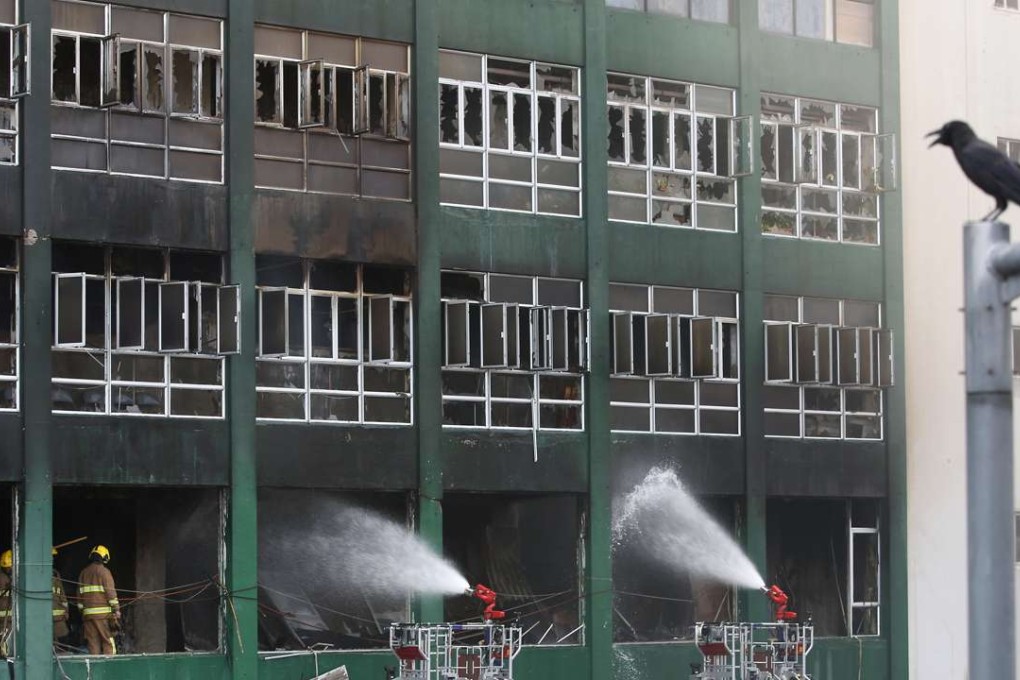What sparked deadly blaze? Probe begins as Ngau Tau Kok fire rages more than 100 hours after igniting
Buildings Department insists Ngau Tau Kok storage facility is still structurally safe but warns firefighters to avoid affected area

A special task force has been set up to investigate whether crime was behind the inferno that killed two firefighters at a Ngau Tau Kok industrial building, which has burned for more than 100 hours.
The structural safety of the Amoycan Industrial Centre came under the spotlight yesterday after concrete peeled from the ceiling on the third floor, where the fire started. The flames were last night said to be under control.
Police said they have been studying surveillance camera footage from inside the building.
“Initial investigations have found that no suspicious people were there to set the place on fire, but the probe is still ongoing,” assistant district commander for crime Yin Hiu-yu said.
Led by the Fire Services Department, the task force includes representatives from the police, Buildings Department, Government Laboratory, and Electrical and Mechanical Services Department.
As well as investigating the cause of the blaze, it will probe the two deaths, review the use of industrial buildings and assess the work procedures of the Fire Services Department.